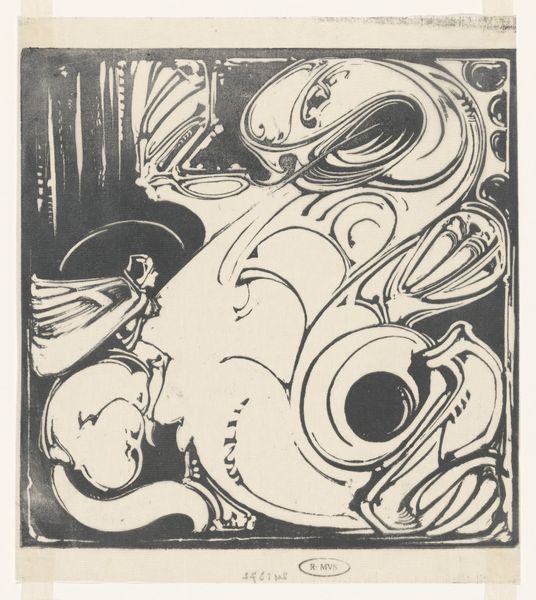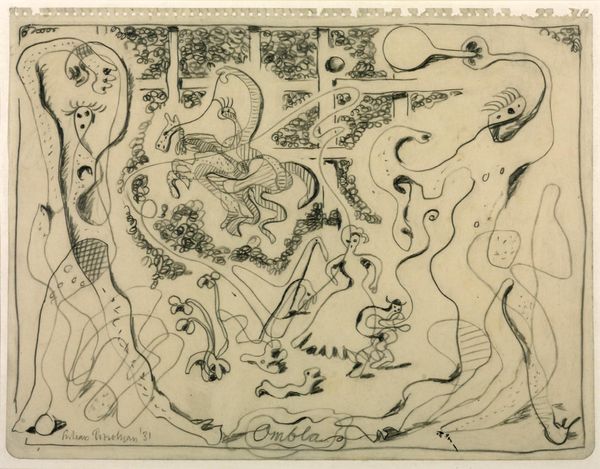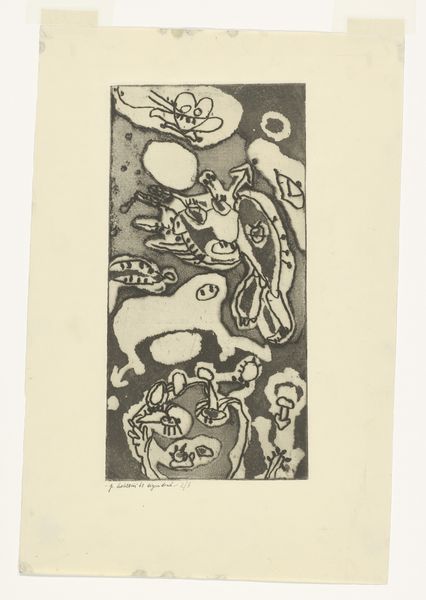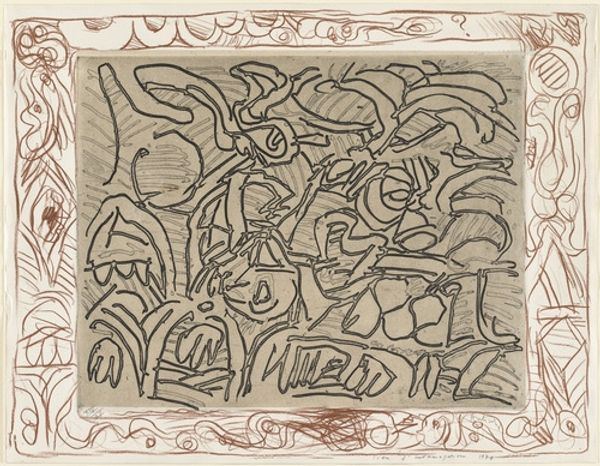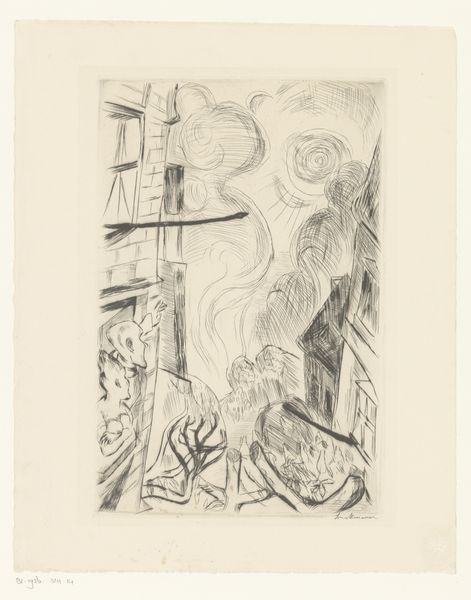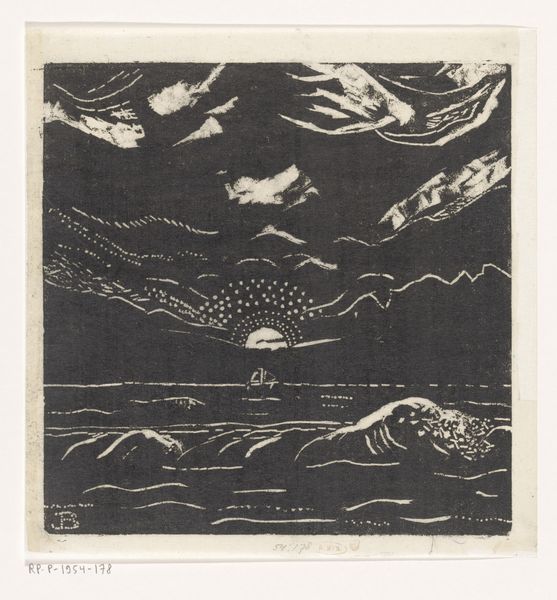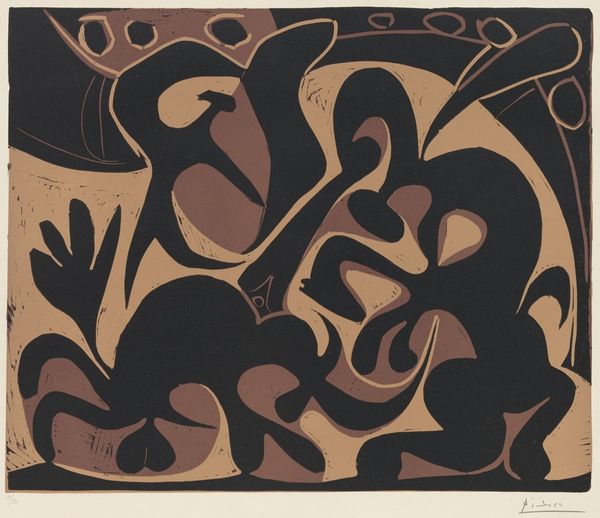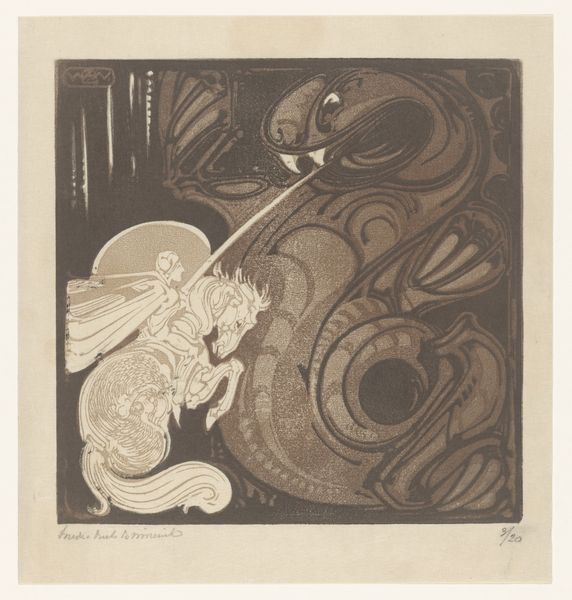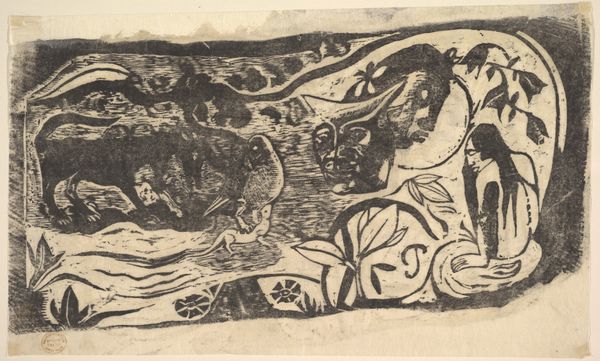
drawing, ink, pen
#
drawing
#
narrative-art
#
pen drawing
#
figuration
#
ink
#
symbolism
#
pen
Dimensions: height 410 mm, width 500 mm
Copyright: Rijks Museum: Open Domain
Editor: So this ink drawing, “Untitled (Symbolistic Hallucinatory Scene)” by P.C. Hamburg, was created sometime between 1890 and 1910. The pen work is just mesmerizing; there's such a captivating density and it feels unsettling. What do you see in this piece? Curator: A lot of visual weight is carried by the archetypes the artist employs. The skull hovering near what seems like a candle flame instantly brings memento mori traditions to mind - reminders of mortality threaded through everyday life. Do you see other familiar symbols being used to construct this hallucinatory vision? Editor: Well, there are faces and figures throughout, a sunset or sunrise in the background, but a lot of it just feels like shapes and patterns...a bit overwhelming, actually. Curator: That overwhelming quality might be precisely the point. Symbolism as a movement grappled with expressing inner psychological states. The chaotic composition, filled with recognizable yet distorted images, evokes the overwhelming and often contradictory nature of dreams or intense emotional experiences. Editor: That makes a lot of sense. I was definitely getting a sense of internal chaos from the image. The table with objects looks almost like reality crashing into the dreamscape. Curator: Exactly. Notice how the more representational objects are grounded while the other figures are integrated with these curvilinear lines. This placement generates visual tension that reflects a sense of reality confronting these deep hallucinations. It highlights the permeable border between what we perceive and what we feel. Editor: I see that now. The visual vocabulary carries so much history, informing how the message comes across, and gives even an untitled work a powerful voice. Thanks for unpacking it! Curator: It's been my pleasure; symbolism invites us to see how potent these motifs remain over time.
Comments
No comments
Be the first to comment and join the conversation on the ultimate creative platform.
